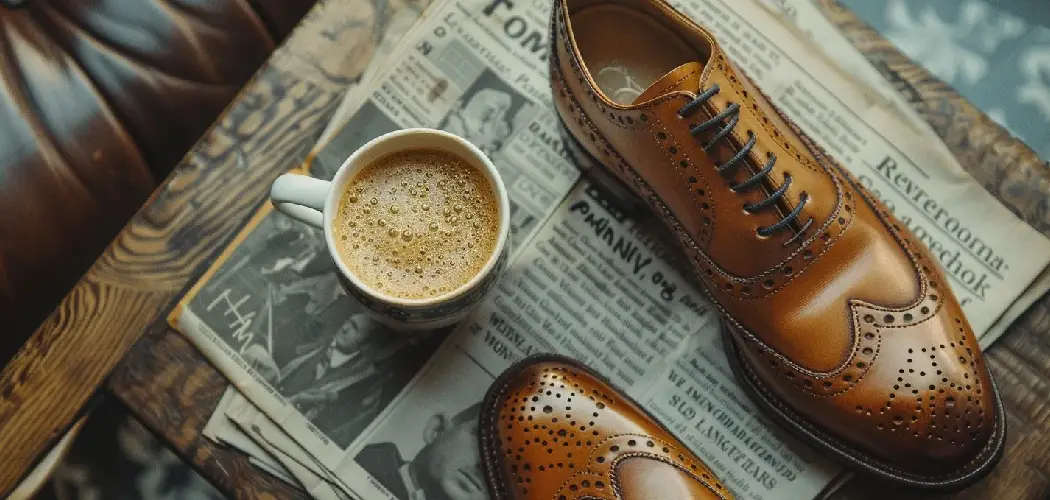Keeping perforated leather shoes clean is essential to maintain their appearance, durability, and breathability. These shoes, known for their stylish design and ventilation, require special care to avoid damaging the material or clogging the perforations.
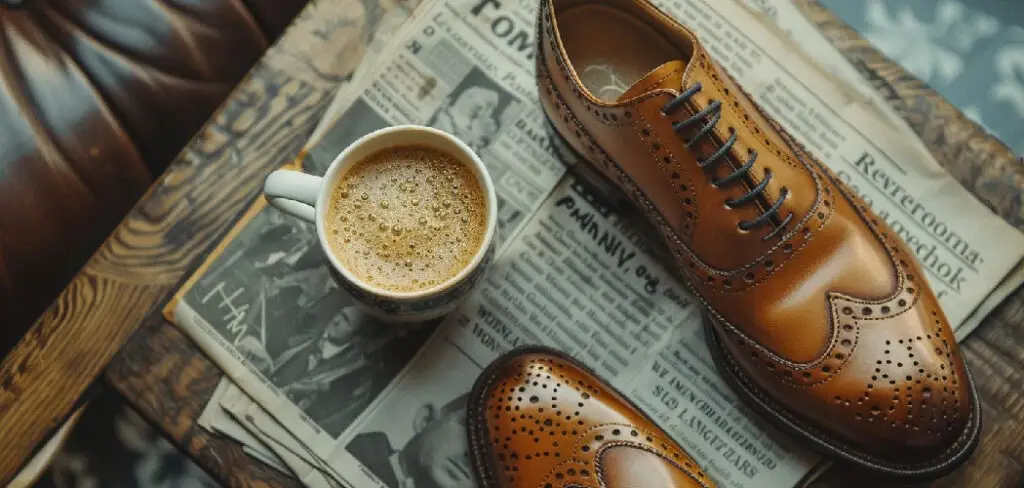
This guide explores the key aspects of how to clean perforated leather shoes. With the right cleaning techniques, you can ensure your shoes remain in excellent condition while extending their lifespan.
What is Perforated Leather
Perforated leather is a type of leather material that features small holes or perforations, typically arranged in a uniform pattern. These perforations are added for both functional and aesthetic purposes. Functionally, perforated leather enhances breathability, making it an excellent choice for items like shoes, car seats, and furniture where ventilation and comfort are important.
Aesthetically, the patterned holes create a unique texture that adds to the material’s visual appeal. Perforated leather is commonly made from high-quality hides to ensure durability and softness while maintaining its distinct look and feel.
The Unique Care Needs of Perforated Leather
Perforated leather requires a more delicate approach compared to standard leather due to its tiny holes and intricate design. These perforations can easily trap dirt, debris, or moisture, which can negatively affect both the appearance and functionality of the material. Avoid using excessive water during cleaning, as it can seep into the perforations, leading to potential damage or mildew. Instead, opt for a damp, soft cloth to gently wipe the surface.
Additionally, using a soft-bristled brush can help dislodge dirt trapped within the holes without scratching the leather. Regular conditioning is crucial to prevent the leather from drying out, but it’s important to use a product specifically designed for perforated leather to avoid clogging the perforations. With consistent and mindful care, perforated leather shoes can maintain their pristine look and breathable qualities.
10 Methods How to Clean Perforated Leather Shoes
1. Dry Brushing to Remove Surface Dirt
One of the easiest ways to start cleaning perforated leather shoes is by using a dry brush. A soft-bristled shoe brush or an old toothbrush can effectively remove surface dirt and debris from the perforations. Gently brush in circular motions, focusing on areas with built-up grime. This method helps loosen dirt particles before using any cleaning solution, reducing the risk of spreading dirt further into the leather.
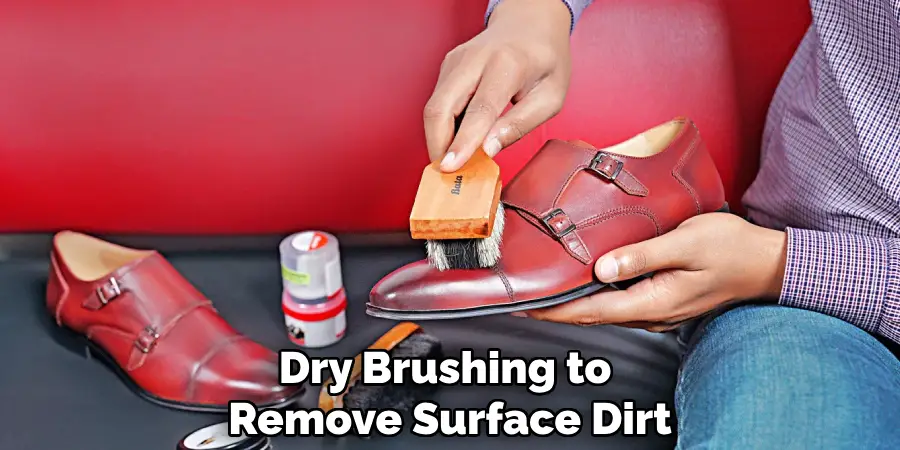
2. Using a Damp Cloth for Light Cleaning
For a quick clean, dampen a microfiber cloth with lukewarm water and gently wipe the surface of the shoes. The goal is to remove light dirt without soaking the leather. Excessive moisture can weaken the leather’s structure, so be sure to wring out the cloth properly before use. After wiping, allow the shoes to air dry at room temperature.
3. Mild Soap and Water Solution for General Cleaning
A mixture of mild soap and water works wonders in cleaning perforated leather shoes. Add a few drops of liquid soap to a cup of warm water and stir until it forms a mild lather. Dampen a soft cloth with the solution and gently clean the shoes, paying special attention to the perforations. Use a separate damp cloth to wipe away any soap residue and let the shoes dry naturally.
4. Using a Soft-Bristled Brush for Deep Cleaning
For stubborn dirt trapped inside the perforations, a soft-bristled brush is an effective tool. Dip the brush in a mild soap solution and scrub lightly in circular motions. Be careful not to apply too much pressure, as this can damage the leather. After brushing, use a dry cloth to absorb excess moisture and leave the shoes to air dry in a well-ventilated area.
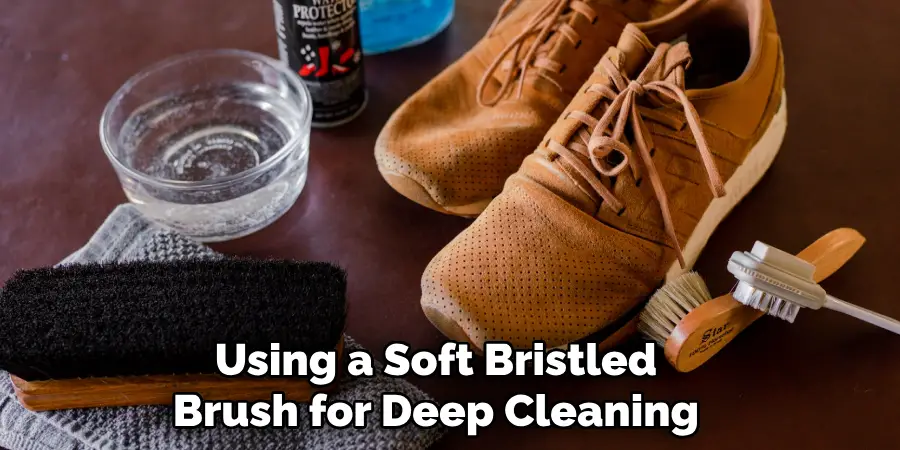
5. Baking Soda for Odor and Stain Removal
Baking soda is an excellent natural cleaner that helps remove stains and odors from perforated leather shoes. Sprinkle a small amount of baking soda over the leather, especially in areas prone to odors, such as the insoles. Leave it overnight to absorb moisture and smells, then brush it off the next morning using a dry brush.
6. White Vinegar Solution for Stubborn Stains
White vinegar is another effective natural cleaner that can tackle tough stains without harming the leather. Mix equal parts of white vinegar and water, then dip a soft cloth into the solution. Gently blot the stained areas rather than rubbing them to prevent spreading the stain further. Once cleaned, wipe the shoes with a damp cloth to remove any vinegar residue and let them air dry.
7. Leather Cleaner for Premium Care
Using a specialized leather cleaner is one of the best ways to clean and maintain perforated leather shoes. These cleaners are designed to preserve the integrity of leather while removing dirt and grime effectively. Apply a small amount of leather cleaner onto a microfiber cloth and work it into the leather in small, circular motions. Wipe off any excess product and allow the shoes to dry naturally.
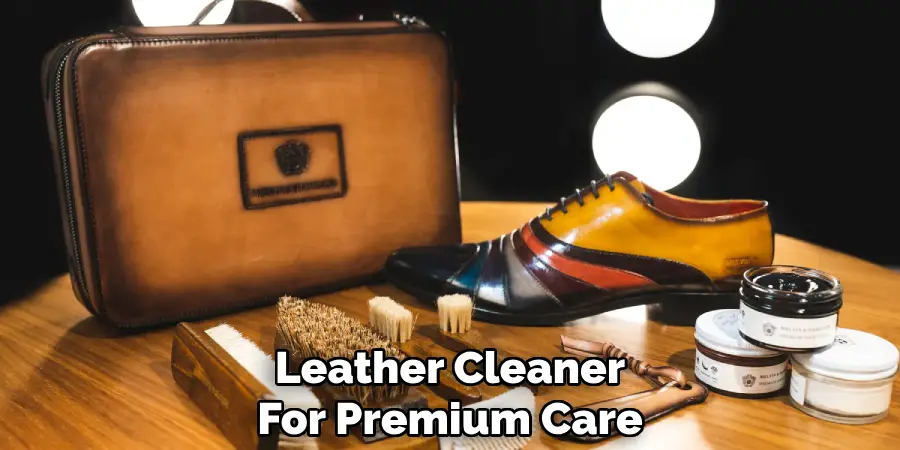
8. Cotton Swabs for Cleaning Perforations
Dirt can easily get trapped inside the perforations, making it difficult to remove with a cloth or brush. Cotton swabs are an excellent tool for detailed cleaning. Dip a cotton swab in a mild soap solution and gently clean inside each perforation. This method ensures a thorough cleaning without spreading dirt onto the leather surface.
9. Conditioning the Leather After Cleaning
Cleaning can strip leather of its natural oils, making it dry and prone to cracking. After cleaning, apply a leather conditioner to keep the material supple and nourished. Use a small amount on a soft cloth and gently massage it into the leather. Let the conditioner absorb for a few minutes before buffing the shoes with a clean, dry cloth for a polished look.
10. Proper Drying and Storage Techniques
Once your perforated leather shoes are cleaned, drying them properly is essential to prevent damage. Avoid exposing them to direct sunlight or heat sources like radiators, as this can cause the leather to dry out and crack. Instead, let them air dry naturally in a cool, well-ventilated area. Stuffing them with newspaper can help absorb excess moisture and maintain their shape. For storage, keep them in a breathable shoe bag or box to protect them from dust and moisture.
Maintenance and Upkeep
Taking proper care of perforated leather shoes doesn’t end with cleaning; regular maintenance is essential to ensure their longevity and durability. Begin by establishing a consistent cleaning routine to avoid the buildup of dirt and stains over time. Make it a habit to inspect your shoes after each wear for any signs of damage, such as tears or loose stitches, and address these issues promptly to prevent further deterioration.
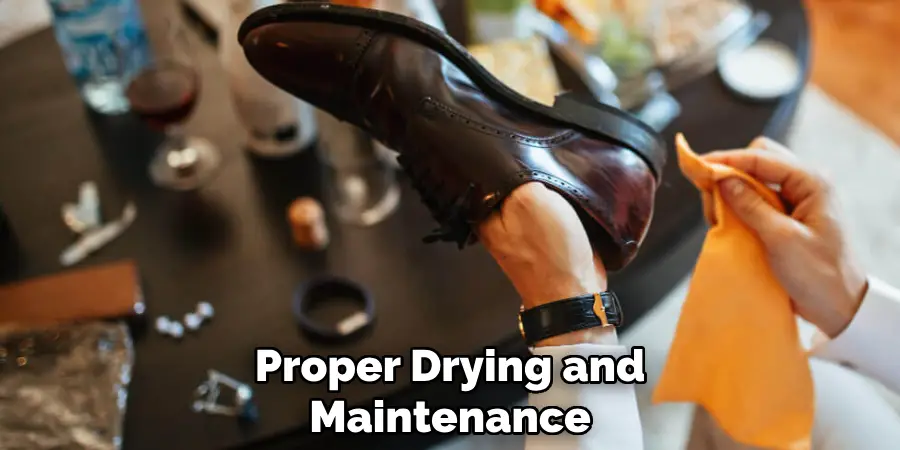
To maintain the leather’s integrity, always condition your shoes every few weeks using a premium leather conditioner specifically designed for perforated leather. This will keep the material hydrated, supple, and resistant to cracking. Additionally, using a waterproofing spray can offer extra protection from water and stains, particularly if you frequently wear the shoes in damp conditions.
For daily wear, rotate between pairs of shoes to reduce strain and allow each pair sufficient time to rest and air out. Use shoe trees when storing your shoes to preserve their shape and help combat moisture. Always store them in a cool, dry area away from direct sunlight or heat sources, as excessive exposure can cause fading and damage. With good upkeep practices, your perforated leather shoes will remain stylish and functional for years to come.
Common Mistakes to Avoid
When caring for perforated leather shoes, it’s important to avoid certain common mistakes that can damage the material or reduce the lifespan of your footwear. Here are some pitfalls to steer clear of:
Skipping Regular Cleaning and Conditioning
Neglecting to clean your shoes regularly can lead to a buildup of dirt, oils, and stains, which may become harder to remove over time. Additionally, failing to condition the leather can cause it to dry out and crack, diminishing both its appearance and durability.
Using Harsh Cleaning Products
Avoid using household cleaners, bleach, or abrasive substances on perforated leather, as these can strip the material’s natural oils, leading to discoloration and weakening of the leather. Stick to mild soap solutions or specialized leather cleaning products for safe maintenance.
Using Excess Water
Leather is highly sensitive to water, and soaking your shoes can damage the structure and cause the material to lose its shape. Always use a damp, not wet, cloth during cleaning, and ensure proper drying to avoid water damage.
Applying Excessive Pressure
Scrubbing too hard, especially over the perforations, can harm the leather or distort the perforated design. Gentle motions and soft-bristled brushes are essential to protect the delicate material while ensuring a thorough clean.
Ignoring Stains and Scuffs
Leaving stains or scuffs untreated for extended periods can set them permanently into the leather, making them much more difficult to remove later. Address issues as soon as they arise to maintain the pristine condition of your shoes.
Conclusion
Cleaning perforated leather shoes requires a combination of gentle techniques and specialized products to maintain their beauty and longevity.
Hopefully, this article gave you some helpful tips about how to clean perforated leather shoes successfully, so now that you have the proper knowledge on how to get the job done, why not give it a try today?
You can also check it out Elevate Leather Outfit Look

